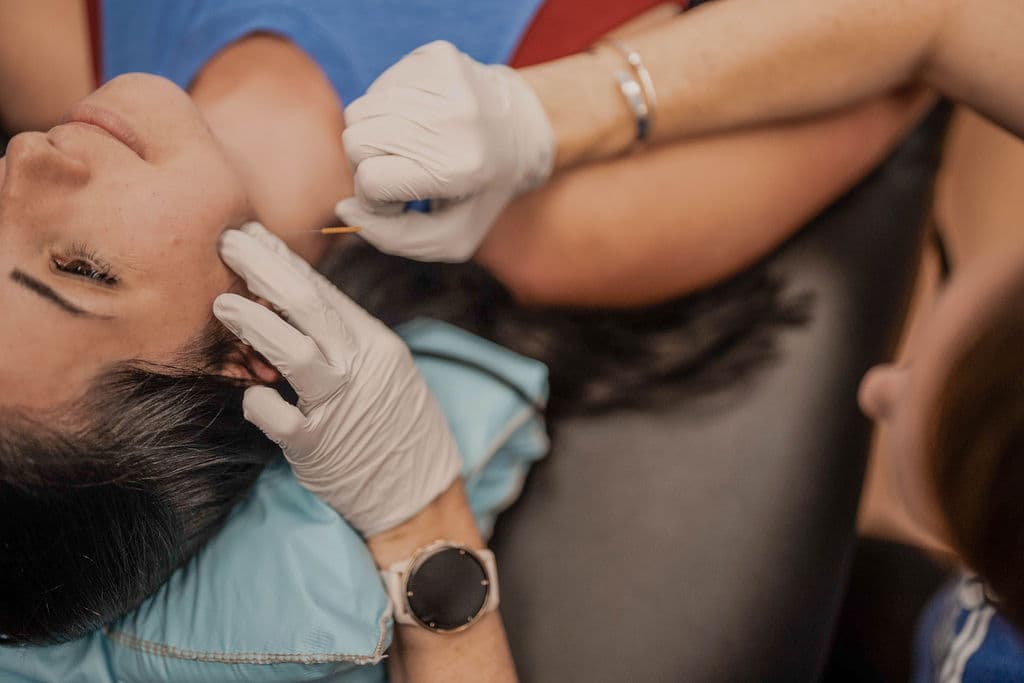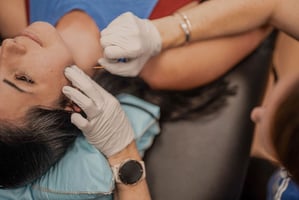Physical therapy offers a wide range of techniques aimed at reducing pain and improving physical...
Common Myths About Dry Needling Debunked
Dry needling is a modern, evidence-based technique used by physical therapists to treat muscle pain, tightness, and movement dysfunction. It involves inserting very thin, sterile needles into specific trigger points—tight knots within muscle tissue—to stimulate a healing response, relieve tension, and restore proper function.
Unlike acupuncture, which is rooted in traditional Chinese medicine, dry needling is based on Western anatomical and neurophysiological principles. The technique targets the musculoskeletal system to address soft tissue dysfunctions that contribute to pain and restricted movement.
READ: Unlocking the Power of Dry Needling: Effective Pain Relief and Muscle Recovery in Wilmington, NC
At Paradigm Performance Therapy, dry needling is often integrated into a broader treatment plan that may include manual therapy, exercise, and movement retraining. It’s a powerful tool for reducing pain, improving mobility, and helping patients return to the activities they love—quickly and safely.

Myth #1: Dry Needling Is the Same as Acupuncture
This is one of the most common misconceptions about dry needling. While both use thin, sterile needles inserted into the skin, that’s where the similarities end. Dry needling and acupuncture differ significantly in purpose, philosophy, and technique.
Rooted in Different Medical Systems
- Acupuncture is based on traditional Chinese medicine and focuses on balancing energy flow—or Qi—through meridian pathways.
- Dry needling, on the other hand, is grounded in modern Western medicine. It targets trigger points, muscle tension, and neuromuscular dysfunction.
Different Clinical Goals
Acupuncture is often used for general wellness, stress reduction, and a wide range of systemic issues. Dry needling is used specifically to release tight muscles, reduce localized pain, and restore movement mechanics—especially in a physical therapy context.
Different Practitioner Training
Physical therapists who offer dry needling receive specialized education and certification in musculoskeletal anatomy and needling techniques. Their focus is on using the treatment to directly support rehabilitation, recovery, and performance.
In short, dry needling is not acupuncture—it’s a clinical tool designed to treat the root cause of movement and pain issues using the science of neuromuscular health.
Myth #2: Dry Needling Is Painful and Unsafe
The idea of inserting needles into muscle tissue can sound intimidating, but in reality, dry needling is a safe, well-regulated, and surprisingly tolerable treatment. Many patients are surprised by how little discomfort they feel—and how much relief they get.
What It Actually Feels Like
Most people report only a brief twitch or mild ache during the needling itself. Some describe it as a deep muscle pressure or quick cramp-like sensation. This is often a good sign, indicating the needle has hit a trigger point and is stimulating a therapeutic response.
Post-Treatment Sensation
After a session, you might feel some temporary soreness in the treated area—similar to how you feel after a workout. This typically resolves within 24–48 hours and is often followed by noticeable improvements in pain, mobility, and muscle function.
Licensed, Trained Professionals
At Paradigm Performance Therapy, dry needling is performed by licensed physical therapists who have undergone extensive training. They understand the anatomy, safety protocols, and clinical reasoning needed to use the technique effectively and responsibly.
Dry needling is safe, evidence-based, and widely used in physical therapy settings across the country. When applied by trained professionals, it’s a highly effective way to accelerate recovery and reduce pain.
READ: Maximize Your Athletic Performance with Performance Physical Therapy in Wilmington, NC
Myth #3: Dry Needling Is Only for Athletes
While dry needling is popular among athletes for its ability to speed up recovery and address overuse injuries, it’s far from being an athlete-exclusive treatment. In reality, people from all walks of life can benefit from this technique.
Helpful for Everyday Aches and Pains
Dry needling is commonly used to treat tension headaches, neck and back pain, sciatica, and shoulder discomfort—all issues that affect office workers, busy parents, and older adults just as much as competitive athletes.
Support for Post-Surgical and Rehab Patients
Many patients recovering from surgery or dealing with long-standing mobility restrictions find that dry needling helps reduce scar tissue stiffness, improve range of motion, and accelerate their return to normal movement.
A Tool for Stress-Related Muscle Tension
Chronic stress can cause muscle tension in areas like the upper traps, jaw, or lower back. Dry needling can help release these tight spots and provide lasting relief from the discomfort that builds up over time.
Whether you're an endurance runner or someone dealing with neck pain from working at a desk, dry needling is a versatile therapy that supports healing and movement for all kinds of people—not just those who compete in sports.
The Truth: Why Dry Needling Is a Powerful Tool in Modern PT
When used correctly and as part of a broader treatment strategy, dry needling can be a game-changer in physical therapy. It’s not a cure-all, but it is a highly effective tool for targeting muscle dysfunction, reducing pain, and restoring mobility.
Speeds Up Recovery
By releasing trigger points and improving local blood flow, dry needling helps tissues heal faster. It can quickly reduce muscle tightness and pain, allowing patients to move more freely and get back to their rehab or training programs sooner.
Enhances Other Treatments
Dry needling is often combined with manual therapy, corrective exercises, and movement retraining. This synergy helps reset the nervous system and create the ideal conditions for long-term improvement—not just temporary relief.
Supports a Return to Function
Whether your goal is lifting pain-free, running without stiffness, or just sitting at your desk without neck tension, dry needling helps unlock mobility that may have been limited for months or even years.
At Paradigm Performance Therapy, dry needling is thoughtfully integrated into personalized care plans. It’s not a quick fix—it’s a strategic tool that supports a full recovery and better movement for the long haul.



.jpg?height=200&name=electrical-stimulation-in-physiotherapy-in-the-ph-2023-11-27-05-00-28-utc%20(2).jpg)
